Peru, where ancient history and modern life intertwine, is home to many mysteries that continue to intrigue explorers and historians. One such mystery is the Candelabra, a massive geoglyph carved into the Paracas Peninsula, whose purpose and origins remain a subject of debate. This article delves into the history of the Candelabra, exploring the various theories about its meaning and uncovering the secrets that have kept it a fascinating enigma for centuries.
Sailing Towards the Candelabra
To truly appreciate the scale and significance of the Candelabra, one must experience it from the sea. Departing from the artisanal pier in Chaco de Paracas, tourists are whisked away on a speedboat for a two-hour journey toward the Ballestas Islands, a place known for its vibrant marine life. But before reaching the islands, travelers will encounter the first stop: the Paracas Candelabra.

Rising majestically from the coastal hill, this vast geoglyph stretches 170 meters, visible from nearly 12 nautical miles away. Its imposing presence, combined with the surrounding ocean views, offers a sense of awe as one approaches. The precise lines and impressive dimensions spark immediate curiosity about the geoglyph’s purpose and origins. Was it designed to mark a place of religious importance? A navigational tool for ancient sailors? Or perhaps something more esoteric, yet to be understood? As tourists look up at the Candelabra, their minds are filled with questions, and their imaginations take flight.

Video
Check out this video to explore the mysterious Paracas Candelabra in Peru, a fascinating geoglyph that has intrigued historians for centuries.
Unraveling the Paracas Legacy
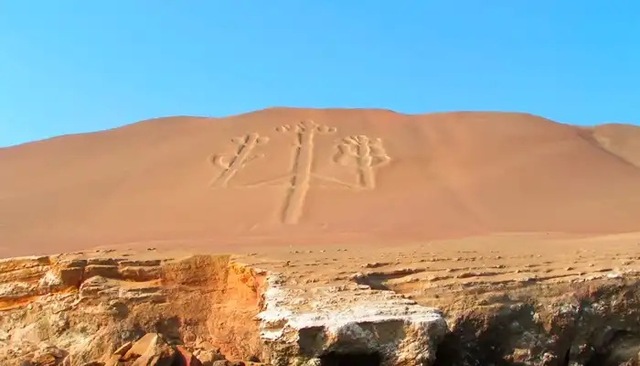
The Paracas civilization, which existed between 700 BCE and 200 AD, left behind a rich cultural heritage marked by intricate textiles, impressive cranial trepanations, and a distinct artistic style. In contrast, the Nazca culture, which flourished after them, is best known for the creation of vast and intricate geoglyphs spread across the plains of southern Peru.
The connection between the Paracas people and the Candelabra has long been speculated. The geoglyph’s location in the Paracas Peninsula, as well as the proximity of archaeological finds in the region, suggests that the Paracas may have been responsible for its creation. However, there is no definitive evidence to confirm this, leaving the question open for interpretation.

Mathematician María Reiche, who dedicated much of her life to studying the Nazca lines, proposed that the geoglyphs, including the Candelabra, held both religious and astronomical significance. While she focused primarily on the Nazca lines, her research suggested a possible link between the two ancient cultures in terms of symbolism and purpose.
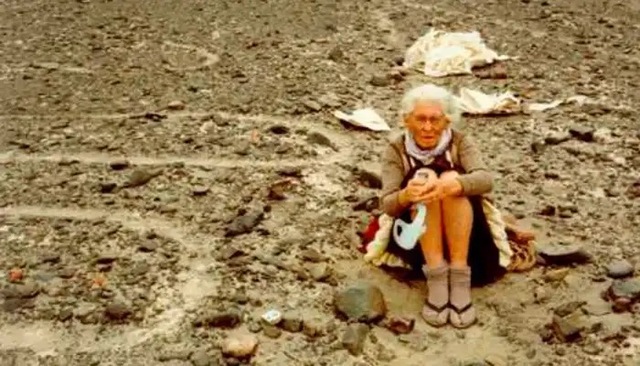
Theories Surrounding the Candelabra
The Candelabra has sparked numerous theories, some rooted in historical context and others inspired by myth and mysticism. One of the earliest interpretations was provided by the Spanish conquistadors, who believed the figure represented the Holy Trinity. However, this religious explanation remains widely debated.
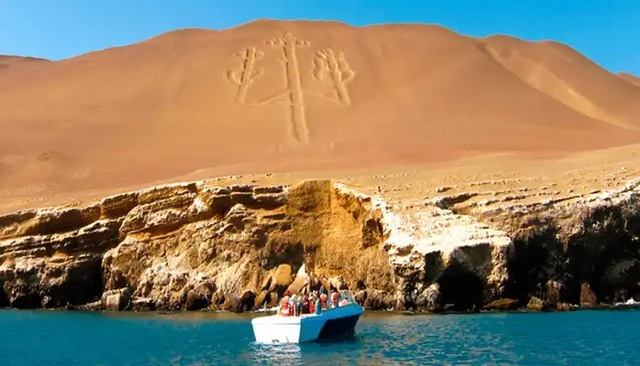
Peruvian writer Beltrán García proposed a more scientific interpretation, suggesting that the Candelabra could have been a giant seismograph designed to measure seismic waves, reflecting the region’s susceptibility to earthquakes. This hypothesis, while fascinating, remains speculative and lacks concrete evidence.
Another widely discussed theory, introduced by scholar René Guénon, posits that the Candelabra represents the Tree of Life. According to Guénon, the geoglyph could symbolize the universal connection between life and the cosmos, with its three arms representing different aspects of existence.
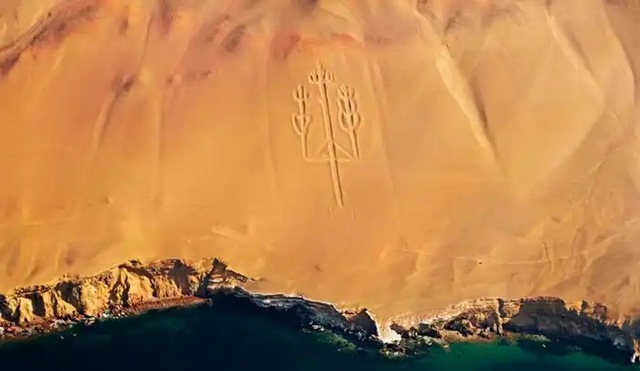
Perhaps one of the most intriguing modern interpretations links the Candelabra to the ancient gods of different cultures. Some researchers believe it could represent Viracocha’s Lightning Rod, the deity worshipped by the Andean civilizations. This theory draws parallels between the Candelabra’s shape and the symbols used to represent gods such as Zeus, Indra, and Baal in different cultures, suggesting that the Candelabra may be a unifying symbol for ancient civilizations.
The Hindu Hypothesis: An Unexpected Link
One of the more unexpected interpretations of the Candelabra comes from Hindu scholars, who have proposed that the geoglyph might be described in the ancient Hindu text, the Ramayana. According to this theory, the Candelabra could represent a celestial compass or guiding beacon for the Vanaras, mythical beings who were sent by King Sugriva in the Ramayana to explore the four corners of the world.
This theory hinges on a specific passage from the Ramayana, in which the Vanaras are directed to sail across the Pacific Ocean to reach a “rock peak etched with a golden pylon resembling a palm tree with three branches.” The description closely mirrors the design of the Candelabra, leading some scholars to suggest that the geoglyph might have been created by ancient Hindu civilizations or may even have been influenced by Indian navigational knowledge.
While this interpretation is purely speculative, it raises intriguing questions about the potential connections between ancient South American and Indian cultures. The linguistic similarities between “Paracas” and the Sanskrit word “Prakash,” meaning light or brightness, further add to the mystery and suggest that there may be more to the Candelabra’s origins than we currently understand.
Geographic and Mythological Connections
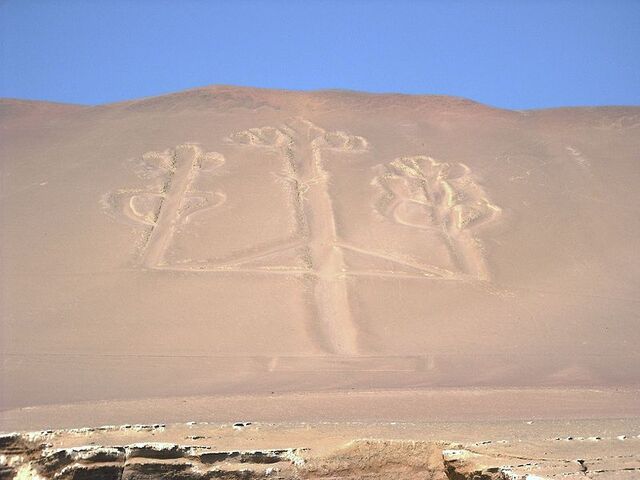
Another fascinating aspect of the Candelabra is its potential role as a guide for ancient navigators. The geoglyph’s position, etched into a hillside and visible from the sea, suggests it could have been used as a navigational marker for sailors traveling along the coast. Its design, with three distinct arms, might have symbolized a guiding force, helping travelers find their way through the vast and often treacherous Pacific waters.

In addition to its practical purposes, the Candelabra may have held deep mythological significance. Many ancient cultures believed in celestial forces and the power of symbols to connect the earthly and divine realms. The Candelabra’s striking appearance, its alignment with natural forces, and its commanding position over the coast suggest that it could have been a powerful symbol of protection and guidance for the people who lived in the region.
Modern Archaeological Insights
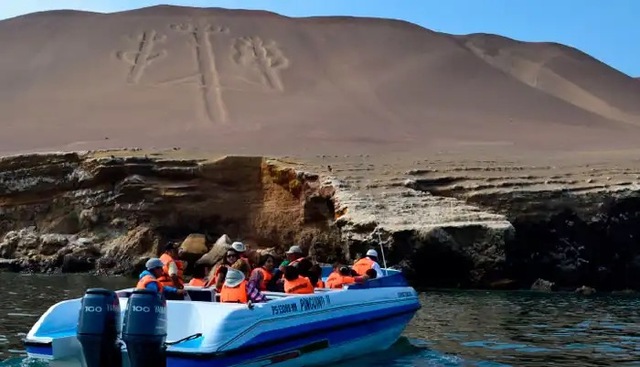
Modern archaeological efforts continue to shed light on the Candelabra’s origins and meaning. Researchers use advanced technology and analysis to study the geoglyph’s structure and compare it to other geoglyphs in the region. These efforts have provided new insights into the methods and materials used to create the Candelabra, though the true purpose of the geoglyph remains elusive.
The integration of archaeology, anthropology, and historical research is vital to uncovering the mysteries of the Paracas Candelabra. By combining these fields of study, scholars hope to piece together a clearer understanding of this ancient monument and its significance in the broader context of Peruvian history.

Video
Watch this video to dive into the mystery of the Paracas Candelabra, an unsolved enigma and prehistoric geoglyph in Peru that continues to puzzle experts.
Conclusion: The Mystery of the Paracas Candelabra
The Paracas Candelabra remains one of the most enigmatic geoglyphs in South America. Despite centuries of speculation and research, its true meaning and purpose continue to elude scholars. Whether it served as a navigational guide, a religious symbol, or a celestial marker, the Candelabra stands as a testament to the complexity of ancient Andean cultures and their connection to the natural world.
As we continue to explore the mysteries of the Paracas Peninsula, the Candelabra will undoubtedly remain a focal point of intrigue and wonder. Its towering presence and profound symbolism invite us to keep searching for answers and to reflect on the ancient civilizations that once thrived in this beautiful and mysterious land. The Paracas Candelabra is more than just a geoglyph—it’s a window into the past, offering glimpses of a world long gone yet still very much alive in the myths, theories, and stories that continue to surround it.



